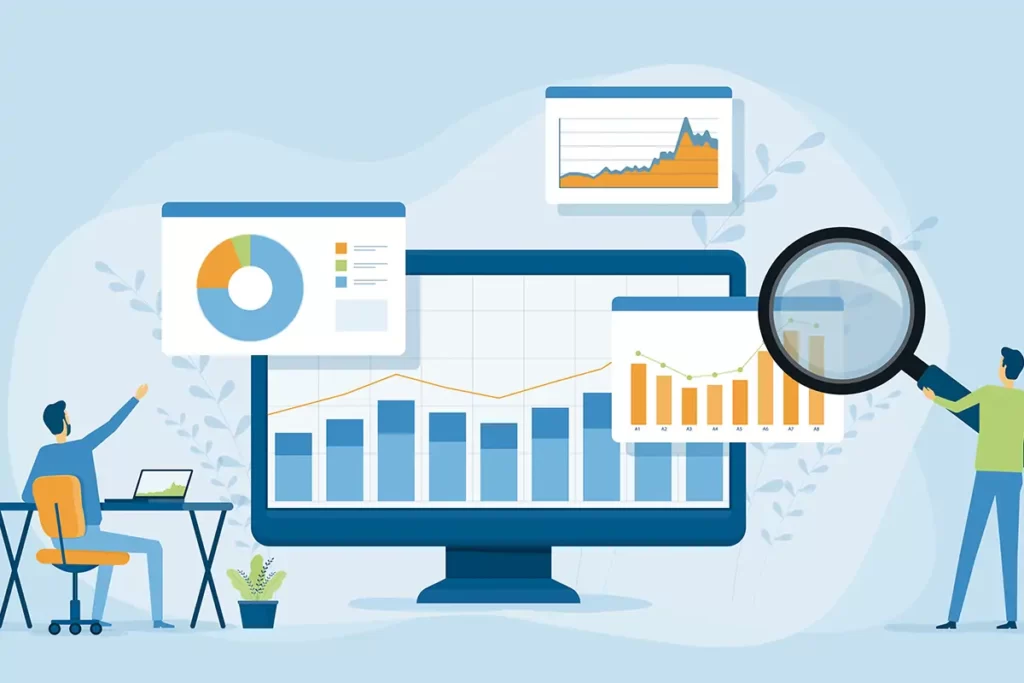Fashion is an ever-evolving industry that blends creativity, trends, and commerce into a vibrant style tapestry. Behind the glamour and runway showcases, however, lies a complex web of economic decisions that shape the fashion world. One crucial aspect is understanding how clothing manufacturers determine cost sheets and pricing strategies.
The economies of fashion delve into the intricate process of calculating production costs, factoring in materials, labour, overheads, and other associated expenses, ultimately influencing consumers’ final price for their garments.
Understanding how custom clothing manufacturers determine cost sheets and pricing can serve us in our business profitability. It will also allow us to make better business decisions, especially for the apparel manufacturers. By analyzing these costs, a clothing manufacturer can determine appropriate pricing strategies for their business. So, let’s dive deeper into it.
Decoding The Cost Sheet: Components and Analysis
From a clothing manufacturer’s perspective, decoding the cost sheet involves comprehensively understanding its components and conducting a detailed analysis. This allows the manufacturer to gain insights into the various cost elements in clothing production and make informed decisions to ensure profitability.
We must understand the basics of a cost sheet component before conducting a deeper analysis. Here are the key components of the cost sheet to consider.
Raw Material Costing
Raw material costing is crucial to determining the overall cost of producing garments. Clothing manufacturers carefully assess the expenses of sourcing the necessary fabrics, trims, and other materials required for production.
Factors such as quality, quantity, availability, and fluctuating market prices influence the cost of raw materials. Manufacturers must strike a balance between maintaining product quality and minimizing costs to ensure competitiveness in the market.
Labour Costs
Labour costing involves calculating the expenses associated with the workforce involved in garment production. This includes wages, salaries, benefits, and additional costs for hiring and managing employees.
The manufacturing process’s complexity, required skill level, and regional labour rates contribute to labour costs. Manufacturers must consider direct labour (e.g., sewing, cutting, and finishing) and indirect labour (e.g., supervision, quality control) when determining the overall labour cost.
Overhead Costs
Overhead costs encompass indirect expenses incurred during manufacturing that are not directly attributable to specific garments. These costs include rent, utilities, maintenance, administrative fees, and depreciation of machinery and equipment.
Overhead costs are distributed across the total production output and play a significant role in determining the overall cost per garment. Manufacturers must accurately allocate overhead costs to ensure they are appropriately reflected in the pricing strategy.
Production Costs
Production cost is the total expenses incurred during manufacturing, including direct and indirect costs. It encompasses raw material costs, labour costs, overhead costs, and any additional costs related to production. This can include equipment maintenance or quality control measures.
By calculating the production cost per garment, manufacturers can determine a baseline price that covers all expenses and allows for profitability. Each step incurs expenses that contribute to the overall cost of manufacturing.
Transportation and Logistics Cost
Transportation and logistics costs are incurred when transporting raw materials, components, and finished garments from one location to another. This includes shipping, freight, customs duties, warehousing, and distribution expenses.
Factors such as distance, mode of transportation, shipping volumes, and trade regulations affect transportation and logistics costs. Efficient supply chain management and optimization of logistical operations are critical for minimizing costs and ensuring timely delivery of garments to the market.
How Clothing Manufacturing Cost Sheet and Pricing Is Done
Creating a cost sheet and determining price involves several critical steps in clothing manufacturing companies. These steps can differ from one manufacturer to the other depending on company and business goals. But some fundamental basics are standard throughout all apparel businesses. Here’s an overview of how it is typically done.

Cost Analysis and Component Identification
Cost analysis involves a detailed examination of all the expenses incurred in producing clothing items. It helps identify the various cost components involved in manufacturing a product. Accurate cost analysis and component identification are crucial to understanding the overall expenses of producing each clothing item.
Here are some fundamental cost analysis and component identification specifications to calculate for your fashion line.
- Duty% (verify for each product type)
- VAT/Taxes% duties and criteria for the business
- Shipping and Logistics costs
- Storage or warehouses costs
- Packaging or labelling costs
- Additional fees and unexpected production costs
This analysis typically involves calculating and evaluating raw materials, labour, manufacturing overhead, and other direct costs. This process helps the clothing manufacturer understand the total cost of each clothing item. Similarly, component identification involves breaking down the price into its various components.
This breakdown allows the manufacturer to accurately pinpoint specific cost drivers and allocate expenses. When preparing the cost sheet, the clothing manufacturer uses this information to calculate the Cost of Goods Sold (COGS) for each product. This knowledge is crucial in setting competitive and profitable prices for clothing items and their profit margins.
Production Overhead Allocation
In this stage, the manufacturer analyzes the various stages of production, including cutting, stitching, finishing, quality control, and packaging. The cost associated with each step is determined, considering the labour, machinery, and materials used.
Production overhead allocation involves distributing the indirect costs (overhead) across the different clothing items produced. The goal is to allocate these costs to reflect their impact on the individual products. Various methods can be used to allocate overhead, such as machine hours, labour hours, or based on specific cost drivers for each item.
Markup and Profit Margin Determination
Markup refers to the amount added to the production cost of a clothing item to cover operating expenses and generate a profit. Profit margin, on the other hand, is the percentage of profit earned on the item’s selling price. Determining the appropriate markup and profit margin requires considering several factors, including:
- Market demand: Understanding the pricing dynamics and the price customers are willing to pay for the product.
- Competition: Analyzing competitors’ pricing strategies to ensure the company remains competitive.
- Target profit: The manufacturer aims to achieve the desired profit level for each product.

Balancing these factors allows the clothing manufacturer to set competitive prices while ensuring a healthy profit margin. Depending on specific sales and organization goals, this profit margin is determined by clothing manufacturing companies. Hence, clothing manufacturing cost sheets and pricing strategies can differ significantly across businesses.
Pricing Strategy Determination
Manufacturers develop a pricing strategy based on market research, consumer behaviour, and competitive analysis. Factors such as perceived value, pricing elasticity, and product positioning determine the optimal price point for each garment. The pricing strategy is the approach a clothing manufacturer adopts to set the prices of its products.
The chosen pricing strategy depends on various factors, including the company’s brand positioning, target market, production efficiency, and overall business objectives. Several common pricing strategies that clothing manufacturers prefer to choose from include the following.
- Cost-based pricing: This strategy involves determining the price by adding a markup to the total production cost.
- Market-based pricing: Setting the price based on the prevailing market rates and competitors’ charges.
- Value-based pricing: Establishing the price based on the product’s perceived value to the customer rather than solely on production costs.
Apart from these pricing strategies, businesses can develop unique and expert ways to leverage unique selling points. In turn, it will formulate different pricing strategies for the company contrasting the traditional ones. Thus, determining the pricing strategy is interconnected with cost sheets and organization objectives.
Understanding Profit Margins in Clothing Manufacturing
Understanding profit margins in clothing manufacturing is essential for sustainable business operations. It involves assessing the gap between the production cost of garments and the selling price. Factors such as raw material costs, labour expenses, overheads, and market competition influence profit margins.

Clothing manufacturers must balance setting prices that ensure profitability while remaining competitive and appealing to consumers. Here are some key strategies to consider.
Profit Margin After Selling Clothes
In this process, we first must determine the total cost of producing the clothes we sell. This includes raw materials, labour, manufacturing overhead, and other expenses directly associated with producing the clothing items.
COGS = Cost of Raw Materials + Labor Costs + Manufacturing Overhead + Other Direct Expenses
We must then calculate the gross profit by subtracting the COGS from the total revenue generated from selling the clothes. After that, the gross profit margin is the percentage of gross profit relative to the total revenue.
Gross Profit = Total Revenue – COGS
Gross Profit Margin = (Gross Profit / Total Revenue) x 100
We must remember that the gross profit margin only represents the profit before accounting for other expenses, such as marketing, sales, administrative costs, and taxes. You need to deduct these expenses from the gross profit to calculate the net profit margin.
Net Profit = Gross Profit – Operating Expenses (e.g., marketing, sales, administrative costs, etc.) – Taxes
Net Profit Margin = (Net Profit / Total Revenue) x 100
This way, we can calculate and analyze the profit margin after selling clothes. Clothing manufacturers need to track all costs and revenues accurately to understand the profitability of their clothing business.
Profit Margin Before Figuring Out FOB
Calculating the profit margin before figuring out the FOB (Free on Board) cost involves determining the profit from selling the clothes without considering the shipping and transportation costs associated with getting the goods to the buyer’s location.
The FOB cost is critical to consider in your overall profitability analysis. It represents the shipping and transportation expenses incurred to deliver the goods to the buyer. It is essential to factor in the FOB cost to determine the actual profit margin, as it directly impacts the final profitability of your clothing businesses and startups.
In this approach, the manufacturer increases the overall cost by a certain percentage margin. The average profit margin added ranges from 10% to 20%. The final price that the buyer agrees to during the final FOB significantly impacts this percentage.
Most of the time, the buyers have a specific FOB in mind. However, the manufacturer or exporter may need to reduce their profit margin to secure the order. Therefore, depending on how much they cost and how much labour costs, it might go up or down.
Ways To Know The Best Pricing For Your Apparel Business
Market research, analyzing the cost of goods sold, brand positioning, and market positioning strategies are some pivotal aspects that ensure the best pricing strategy. We can provide the best pricing by appropriately researching, understanding, and analyzing these elements.

Setting the correct pricing for a clothing manufacturing business is critical to ensuring its success and profitability. An optimal pricing strategy requires a careful balance between covering costs, appealing to the target market, and maximizing profits. The first aspect of the calculation is the Cost of Goods Sold in the manufacturing business.
Understanding the total cost of producing each clothing item, including raw materials, labour, manufacturing overhead, and other direct expenses, is essential for optimal pricing. This is because the Cost of Goods Sold (COGS) forms the baseline for pricing decisions. So, knowing the COGS is necessary for the business to avoid underpricing products, leading to potential losses.
Additionally, market research plays a pivotal role in determining the best pricing strategy. It involves analyzing the target market, customer preferences, and competitor pricing. The business can gain valuable insights into pricing thresholds by conducting surveys, focus groups, and competitor analysis. This will allow manufacturers to gain a pricing advantage.
Another essential consideration is the clothing manufacturing business’s brand positioning and market positioning. Premium and luxury brands can command higher prices due to their perceived exclusivity and superior quality. On the other hand, a budget-conscious brand may opt for more affordable prices to target a broader market segment.
Therefore, finding the right balance between brand identity and pricing is critical to attracting the intended customer base. Carefully analyzing the key indicators and factors influencing pricing decisions can ensure an optimal pricing strategy. In this way, clothing manufacturers will be able to know the best pricing for their apparel business.
Conclusion
Clothing manufacturers undergo different business strategies and policies to determine their cost sheets and pricing. By understanding the economies of fashion, clothing manufacturers can implement the best pricing decisions for their businesses. This way, we can achieve our target and long-term objectives by gaining the proper insight and knowledge.

